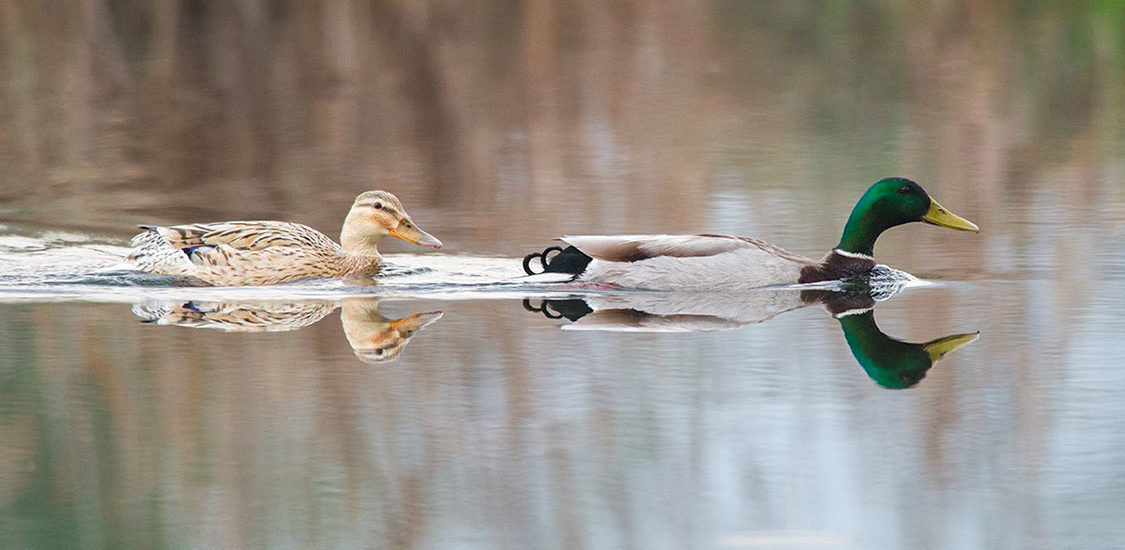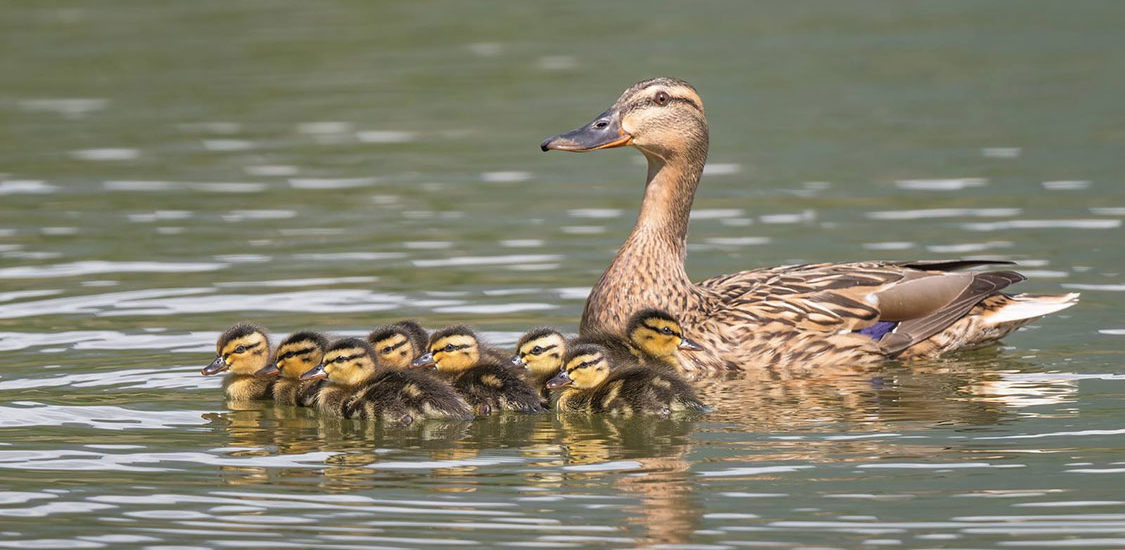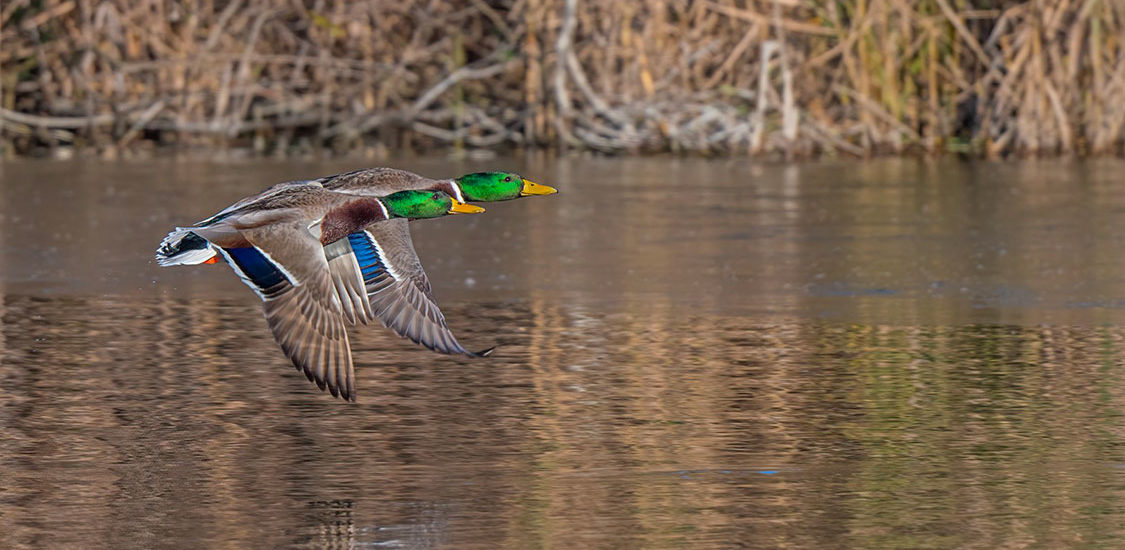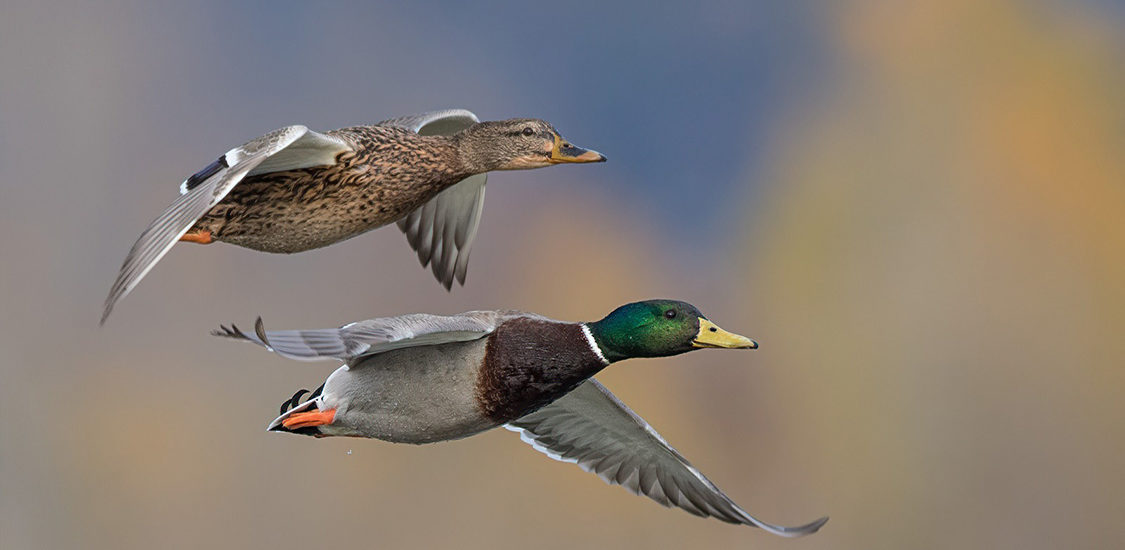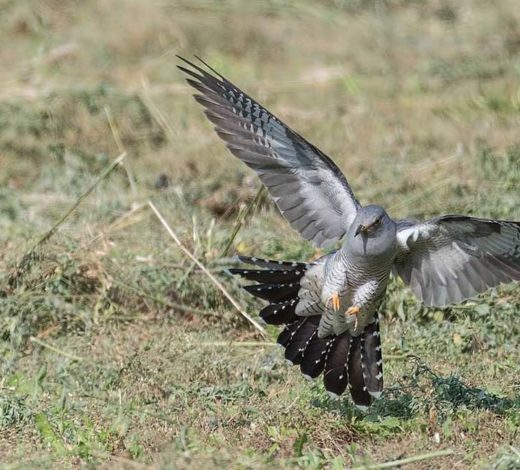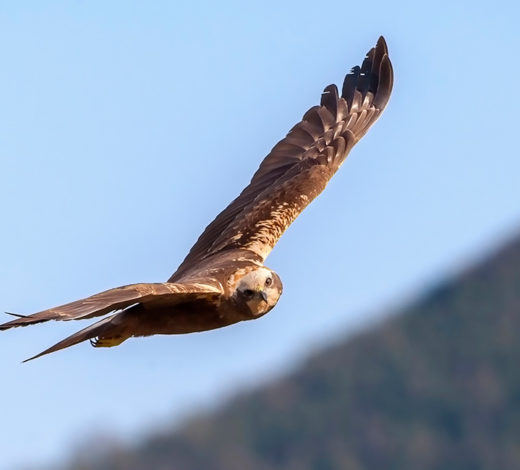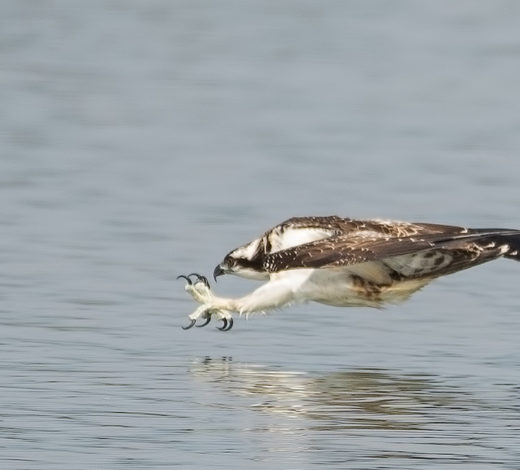Mallard
(Anas platyrhynchos)
A common, well-known dabbling duck that represents the ‘prototype’ of domestic species.
Description
They have a marked sexual dimorphism. Males have a metallic green head and neck, thin white collar, and brownish-red chest, while the females and young are brown with dark patches. Typical of both sexes are the iridescent violet-blue speculum feathers edged above and below with a white band. Total length: 50–65 cm. Wingspan: 81–98 cm. Weight 600– 1490 g. As with other dabbling ducks, they take flight directly from the water. Individuals crossed with other domestic ducks are present on the lake and in the Reserve. These have anomalous colouring, for example, a wide white bib on the chest.
Habitat
They build their nests in a wide range of damp environments, both on the coasts and inland, up to 2250 m in the Alps. In winter they can also be seen in the sea. Pairs form in autumn/winter. Omnivorous, they feed in shallow water, dipping their heads into the water or extending themselves vertically, leaving only their rear ends above the surface. Females, which make a harsh, nasal sound, commonly defend their brood, feigning injury to keep intruders away.
Observation in the Torbiera Reserve
Mallards are migrators and regularly winter in the Reserve, with the number of individuals fluctuating between a few dozen and a few hundred. They are rather scarce as nest builders, since there are fewer than ten apparently wild pairs that have settled along the borders. The presence of numerous other semi-domesticated or wild individuals, some of which have atypical colouring, are not significant for ornithology.
